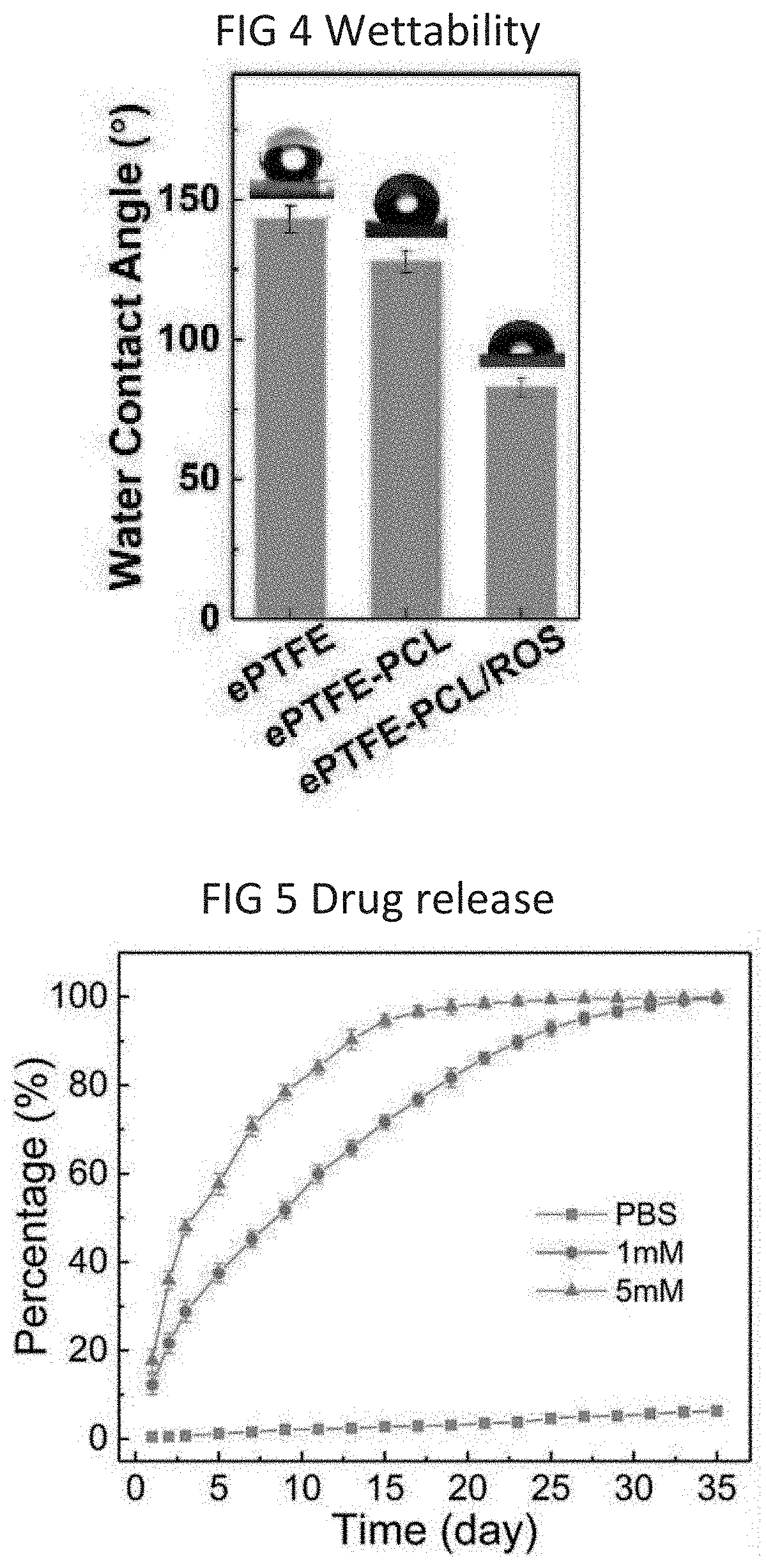Methods of making polytetrafluoroethylene/polymer composites and uses thereof
a polytetrafluoroethylene and composite technology, applied in the field of making polytetrafluoroethylene/polymer composites, can solve the problems of limiting the application of ptfe/composites, requiring secondary processing, and no effective method for making ptfe/polymer composites, etc., and achieves the effect of improving the functionality of ptfe and easy control of drug releas
- Summary
- Abstract
- Description
- Claims
- Application Information
AI Technical Summary
Benefits of technology
Problems solved by technology
Method used
Image
Examples
example 1
[0047]In this Example, TPU / PTFE composites were made for use in PTFE / ePTFE fabrication using the methods of the present disclosure.
[0048]8 grams of thermoplastic polyurethane (TPU) were dissolved in 40 grams dichloromethane (DCM) followed by blending with 80 grams polytetrafluoroethylene (PTFE). Then, the mixture was roll blended for 1 hour with a speed of 4 rpm (room temperature, normal atmosphere). After complete removal of DCM by evaporating, the resulting material was a TPU / PTFE composite.
example 2
[0049]In this Example, PCL / PTFE composites were made for use in PCL / ePTFE fabrication using the methods of the present disclosure.
[0050]6 grams of polycaprolactone (PCL) were dissolved in 40 grams dichloromethane (DCM), followed by blending with 80 grams PTFE. Then, the mixture was roll blended for 1 hour with a speed of 4 rpm (room temperature, normal atmosphere). After evaporation of DCM, the resulting material was a PCL / PTFE composite.
example 3
[0051]In this Example, a PCL / PTFE composite was prepared, drug loaded using the methods of the present disclosure.
[0052]Drug Synthesis
[0053]Ethyl salicylate (ESA) (2.28 g, 13.72 mmol, 99%, Alfa Aser, USA) and triethylamine (1.389 g, 13.72 mmol) were dissolved in 60 mL of Dichloromethane dichloromethane (DCM). Oxalyl chloride (1.74 g, 13.72 mmol, 98%, Alfa Aser, USA) was dissolved in 40 mL of DCM and then was added to the above solution drop-wise in an ice-water bath with mechanical stirring. The reaction mixture was stirred at room temperature for 2 hours. Next, hexane (150 mL) was added to the solution, and the triethylamine hydrochloride was removed by filtration. After evaporation of hexane under vacuum, ethyl 2-(2-chloro-2-oxoacetoxy) benzoate was obtained as a colorless oily liquid and was used for further operations without purification. The chemical structure of the obtained ES-ROS was confirmed using NMR (JNM EX-400, JEOL, Japan). 1H NMR (400 MHz, CDCl3): δ=1.35 (3H), 4.35 (...
PUM
| Property | Measurement | Unit |
|---|---|---|
| Temperature | aaaaa | aaaaa |
| Temperature | aaaaa | aaaaa |
| Temperature | aaaaa | aaaaa |
Abstract
Description
Claims
Application Information
 Login to View More
Login to View More - R&D Engineer
- R&D Manager
- IP Professional
- Industry Leading Data Capabilities
- Powerful AI technology
- Patent DNA Extraction
Browse by: Latest US Patents, China's latest patents, Technical Efficacy Thesaurus, Application Domain, Technology Topic, Popular Technical Reports.
© 2024 PatSnap. All rights reserved.Legal|Privacy policy|Modern Slavery Act Transparency Statement|Sitemap|About US| Contact US: help@patsnap.com










